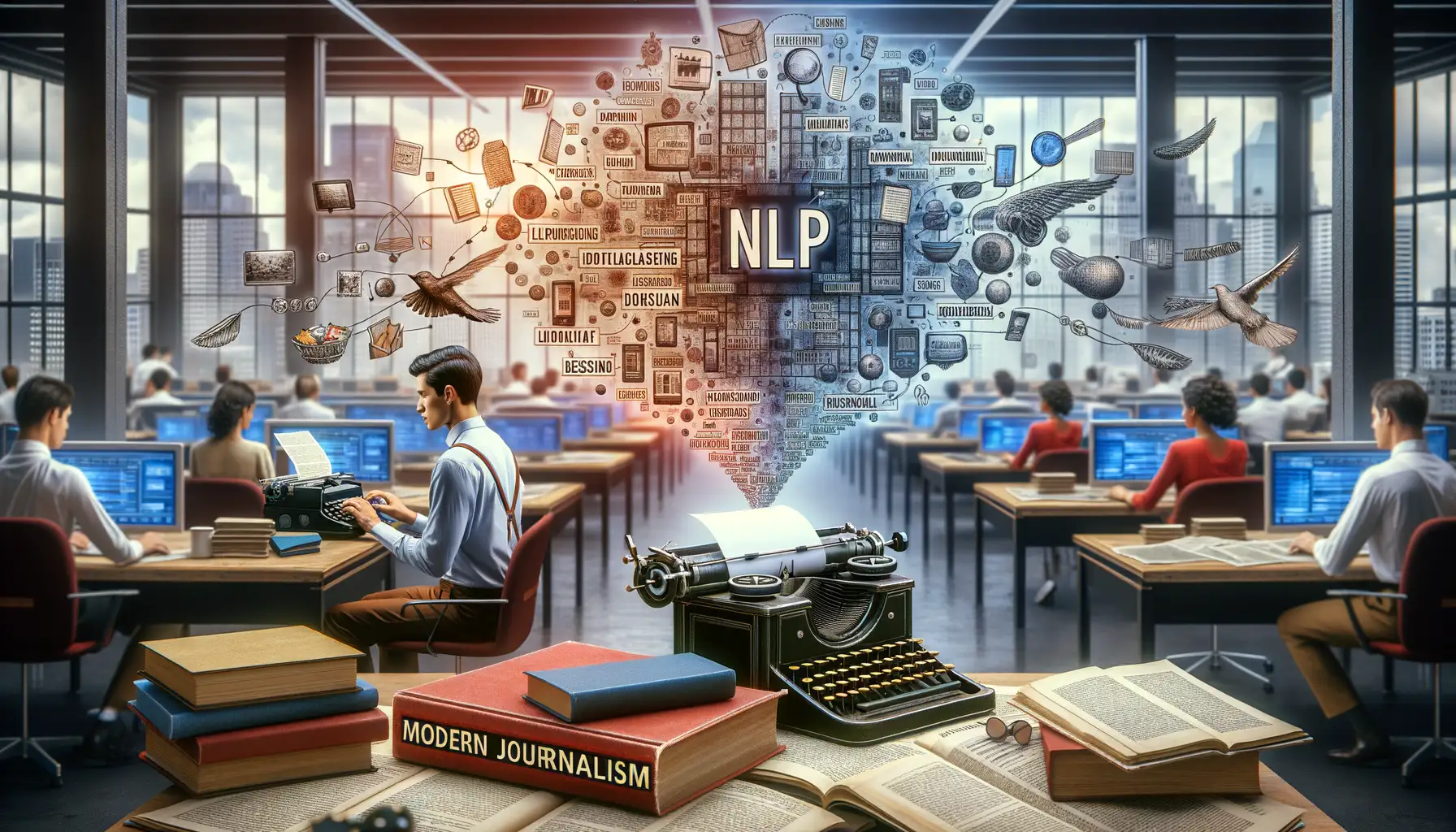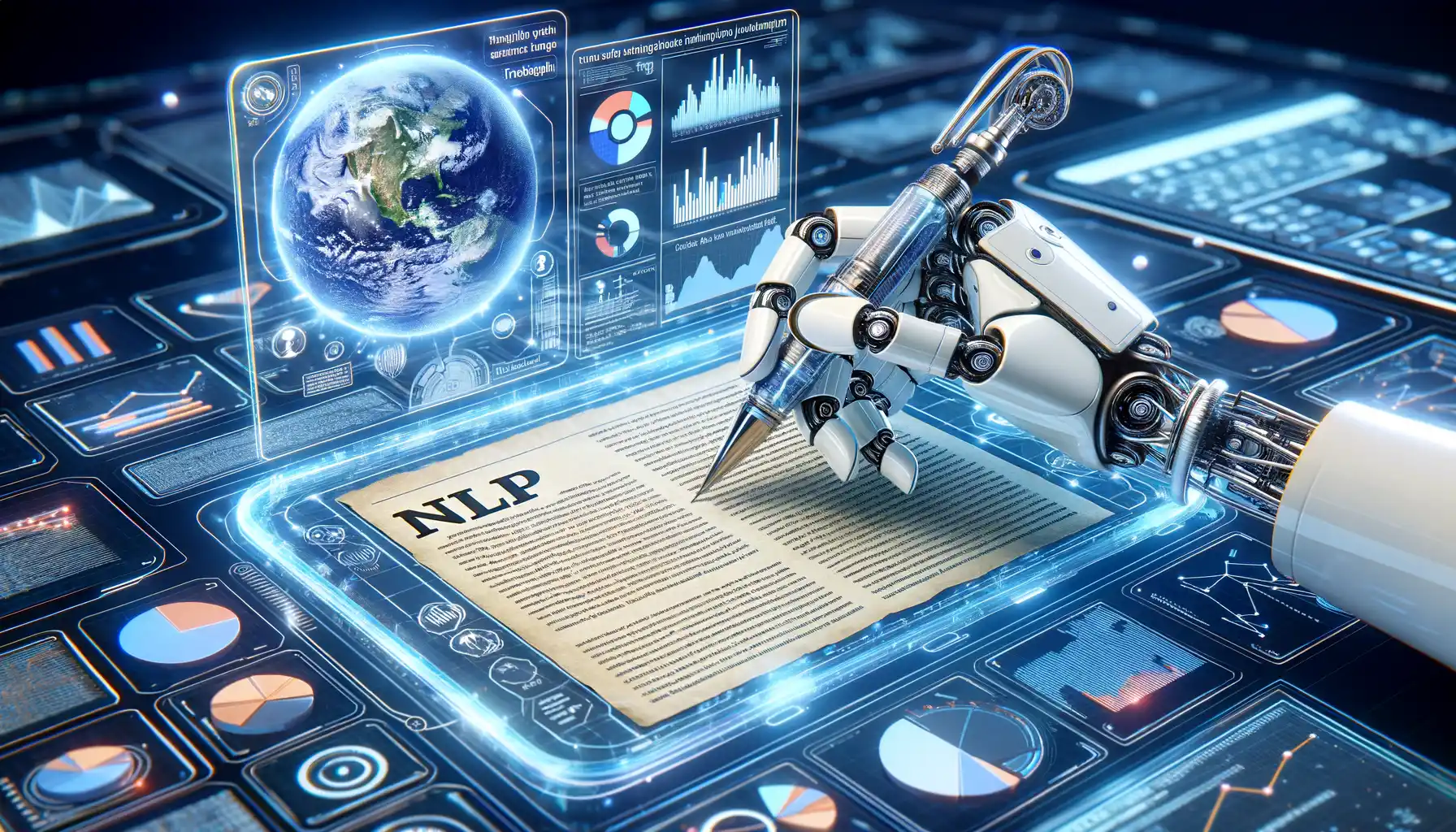Introduction to Natural Language Processing in Journalism
Why Language Technology Matters in Journalism Today
Imagine this: you’re a journalist in the heart of a bustling newsroom, trying to sift through an endless ocean of breaking stories, social media chatter, and public feedback. It’s fast-paced, noisy, and relentless. Now, picture having an invisible assistant—one capable of scanning millions of words in seconds, identifying trends, and even summarizing complex reports for you. That’s exactly where Natural Language Processing (NLP) steps in, revolutionizing journalism as we know it.
At its core, NLP is all about teaching computers to understand human language. But don’t let the word “processing” fool you—it’s far from mechanical. Whether it’s deciphering the subtle tones in an investigative report or pinpointing emotional nuance in a tweet, this field is like giving machines a crash course in our messy, beautiful ways of communicating.
- Ever wondered how fake news gets flagged? NLP is behind those algorithms.
- Curious how search engines know exactly what piece of journalism you’re hunting for? That’s NLP magic too.
So in the age of information overload, NLP doesn’t just help journalists stay afloat—it helps them thrive.
Applications of NLP in Newsroom Practices

Revolutionizing News Gathering and Story Crafting
Picture this: a journalist, drowning in an ocean of information, searching for that one pearl of truth. Enter Natural Language Processing (NLP), the game-changer transforming how newsrooms operate. By sifting through mountains of data, NLP can pull out key stats, trends, and even breaking news faster than you can say “exclusive.” Imagine a reporter getting instant alerts for specific keywords—be it “climate change,” “elections,” or “blockchain”—and knowing exactly which story to chase before anyone else does.
But it doesn’t stop there. Ever struggled with fact-checking? NLP tools like automated entity recognition dive into archives, verifying claims and detecting discrepancies like an eagle-eyed editor. Goodbye misinformation, hello accuracy!
- Language translation: Reporting from global sources? NLP bridges language gaps so no border is a barrier.
- Sentiment analysis: Gauge public opinion instantly—whether it’s outrage over a policy or excitement about a new movie release.
- Speech-to-text transcription: Long interviews? Turn hours of audio into precise notes effortlessly.
Personalized Reader Experiences
Now let’s talk about the audience. With NLP, newsrooms don’t just deliver—it’s like they handcraft every article for you. Imagine landing on a news site and seeing stories perfectly tailored to your interests. That’s the magic of content recommendation algorithms powered by NLP.
And personalization gets even smarter. Take email newsletters. NLP determines what topics resonate with readers most—politics, tech, or crime—and then serves up content that genuinely matters to them. It’s journalism that feels personal, yet scalable to millions.
Oh, and have you ever noticed those automated summaries at the end of articles? Yep, NLP again. It trims the fluff, giving you the core facts in seconds. It’s like having a newsroom assistant who knows exactly what you need (and spares you the scroll).
Benefits of NLP for Modern Journalism

Reinventing Research and Storytelling
Picture this: you’re racing against the clock to craft a compelling investigative piece. Hours spent combing through data, picking apart quotes, and fact-checking until your eyes blur. Now imagine having a digital assistant—empowered by Natural Language Processing (NLP)—who does half the legwork for you. Sounds dreamy, right?
NLP breathes life into journalism by automating the grunt work so you can focus on the art of storytelling. Want to analyze thousands of documents in seconds? Done. Need to detect trends in real-time social media chatter? Easy. Here’s how it transforms the way reporters work:
- Enhanced Speed: NLP-powered tools like text summarizers sift through oceans of information, offering crystal-clear insights faster than humanly possible.
- Data-Driven Precision: Tools identifying patterns or even mood shifts help journalists dive deeper into topics, giving stories new angles.
Turning Data Into Emotion
Journalism thrives on connections. It’s not just about headlines; it’s about making readers *feel*. With NLP, modern journalism becomes a masterclass in empathy. Imagine creating articles tailored to your audience’s emotional tone. Let’s say you’re covering a disaster. An NLP sentiment analyzer could help gauge public reaction across platforms, helping you strike just the right balance of sensitivity and urgency.
And here’s the kicker: these tools don’t just decode words, they amplify voices. By translating hundreds of languages at scale, Google Translate API or DeepL allow you to share stories that might’ve otherwise stayed buried, crossing literal and figurative borders. Isn’t that what journalism is all about?
Challenges and Ethical Considerations of NLP in Newsrooms

Walking the Tightrope: Navigating NLP’s Challenges in Journalism
The introduction of Natural Language Processing into newsrooms is like handing reporters cutting-edge power tools—but tools that require caution. While NLP has revolutionized reporting, editing, and audience engagement, it also brings a unique set of hurdles to overcome. Let’s pull back the curtain on some not-so-glamorous truths.
Firstly, there’s the issue of bias in algorithms. The same technology that can summarize articles at warp speed might unknowingly amplify pre-existing prejudices. Why? Because NLP models are trained on human-generated data, which isn’t always neutral. A poorly trained model may skew coverage, frame narratives unfairly, or reinforce stereotypes—turning a newsroom’s credibility into collateral damage.
Add to this the tricky territory of privacy concerns. NLP’s ability to process endless streams of data raises red flags when it comes to reader information. Imagine an AI suggesting personalized content based on user preferences—it feels convenient, right? But what happens when those preferences are mined without explicit consent?
- How transparent should we be about AI-driven decisions in newsrooms?
- What safeguards ensure ethical boundaries aren’t crossed?
Lastly, let’s talk accuracy. Models like GPT may be brilliant linguists but lack the instinctive fact-checking radar of seasoned journalists. Without careful oversight, NLP tools could help churn out stories riddled with inaccuracies, leaving trust in tatters.
In short, while these tools offer immense potential, they’re no autopilot solution. Balancing efficiency with ethics? That’s the real story here.
The Future of NLP in Transforming Journalism

The Cutting-Edge Role of NLP in News Innovation
Picture this: a newsroom buzzing not just with journalists, but also with the invisible power of algorithms. Natural Language Processing (NLP) is no longer the dreamy concept of sci-fi novels—it’s here, rewriting how journalism works.
Imagine an algorithm that can sift through thousands of pages of government documents in minutes to uncover corruption or trends. Or tools that analyze social media chatter to predict breaking news before it’s even a whisper on mainstream channels. That’s exactly the potential we’re looking at with NLP.
Newsrooms are already embracing cutting-edge features. You’ll see:
- Automatic content translation, giving readers global access to stories in their native language.
- Highly personalized news feeds tailored to individual interests, served up with uncanny precision.
- Real-time sentiment analysis of public opinion, helping shape narratives in evolving situations.
Human Creativity + Machine Precision
But let’s not underestimate the magic of blending human ingenuity with NLP. It’s not about replacing journalists; it’s about giving them a digital backpack full of tools to dig deeper and work smarter. Think AI-powered suggestion engines that spark new angles for investigative reports or chatbot assistants gathering sources while you brainstorm.
The future of journalism isn’t robots taking over your newsroom desk—it’s about partnership. Machines crunch data; humans tell the story. Together, they’re unstoppable.





